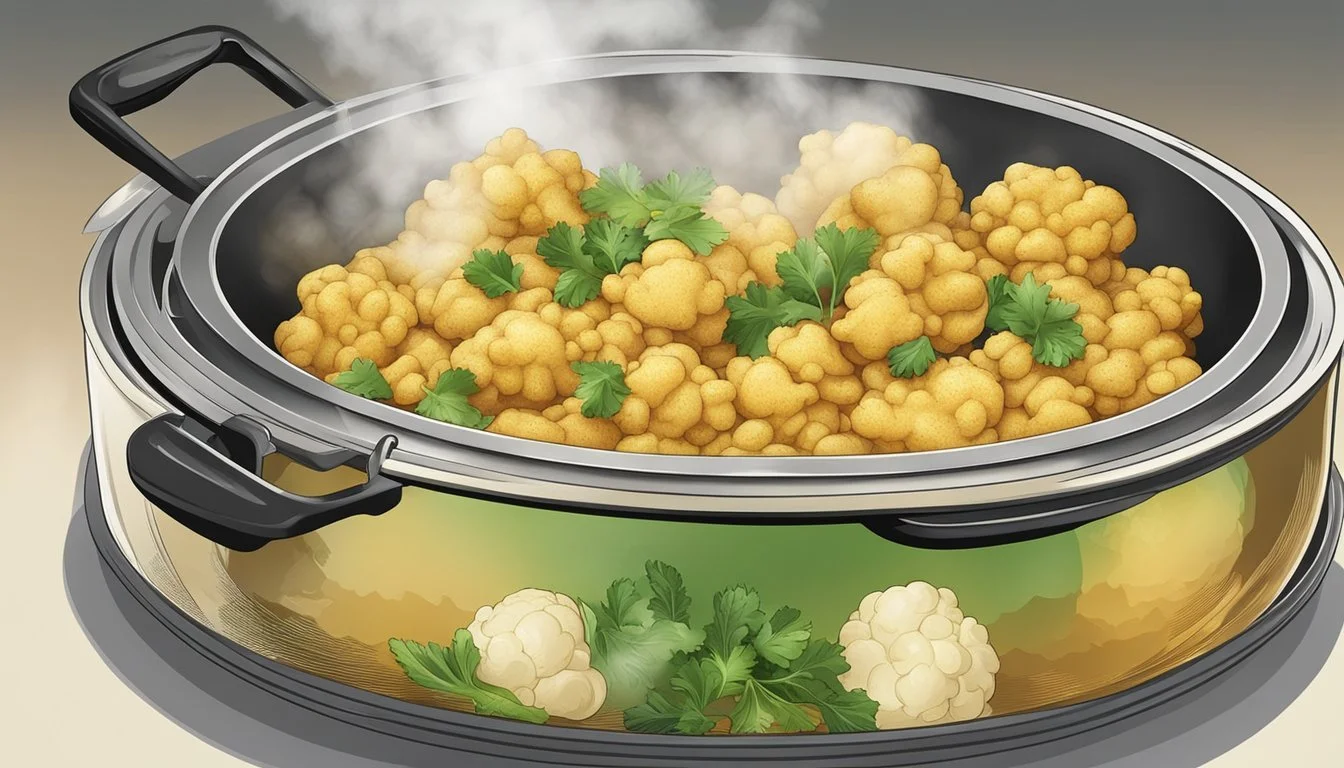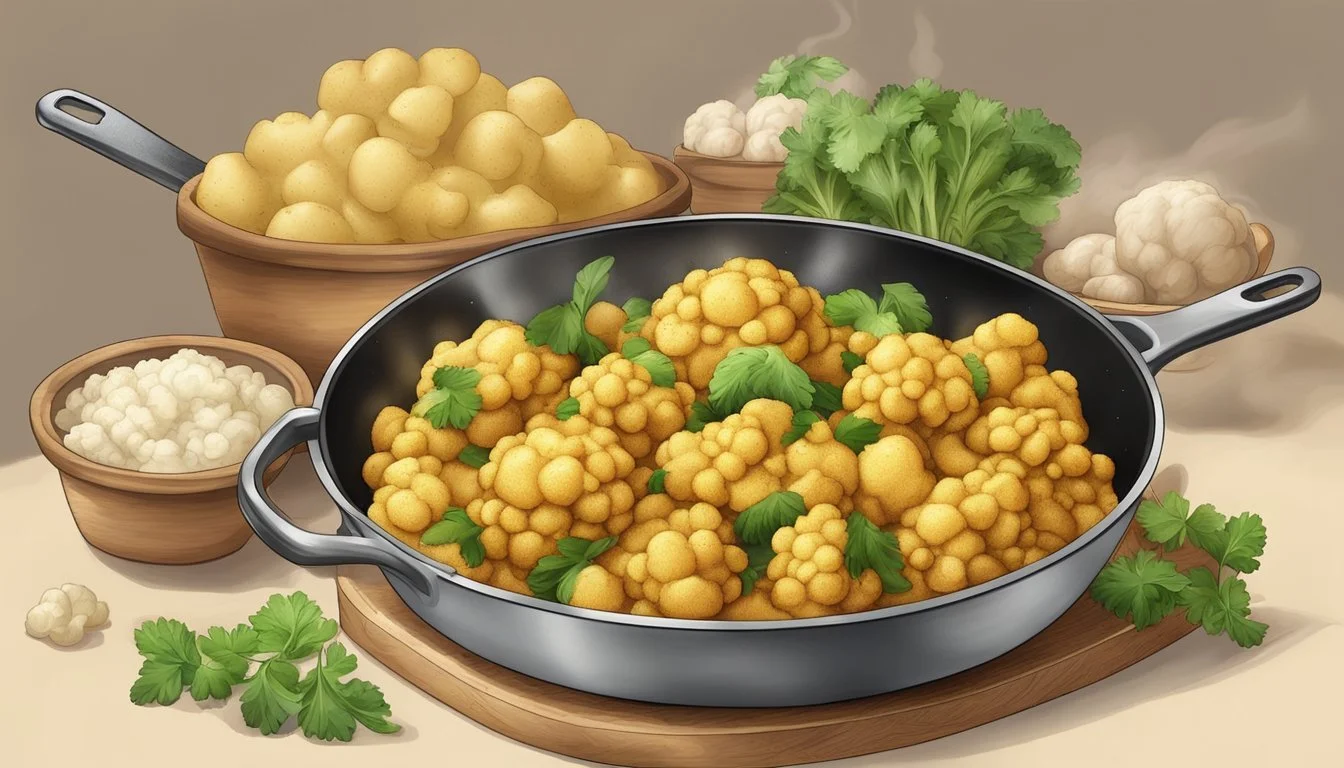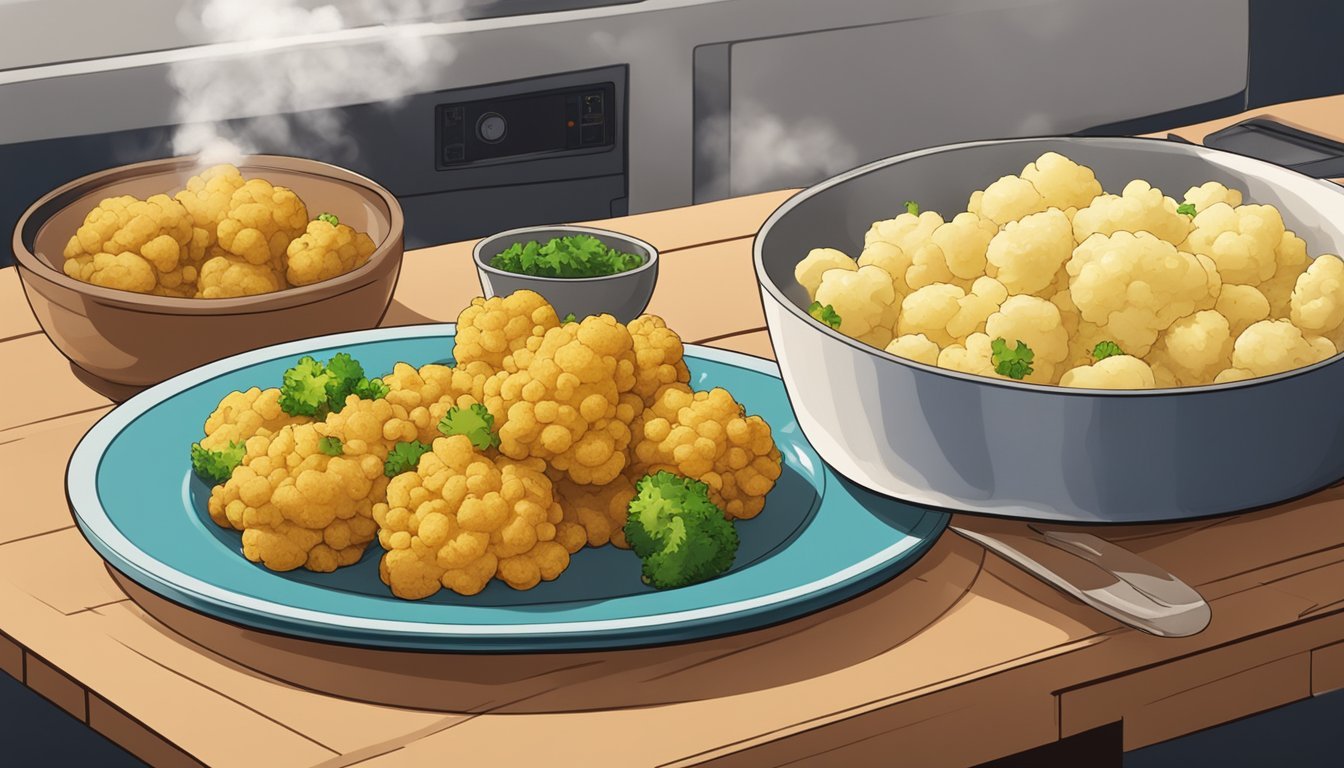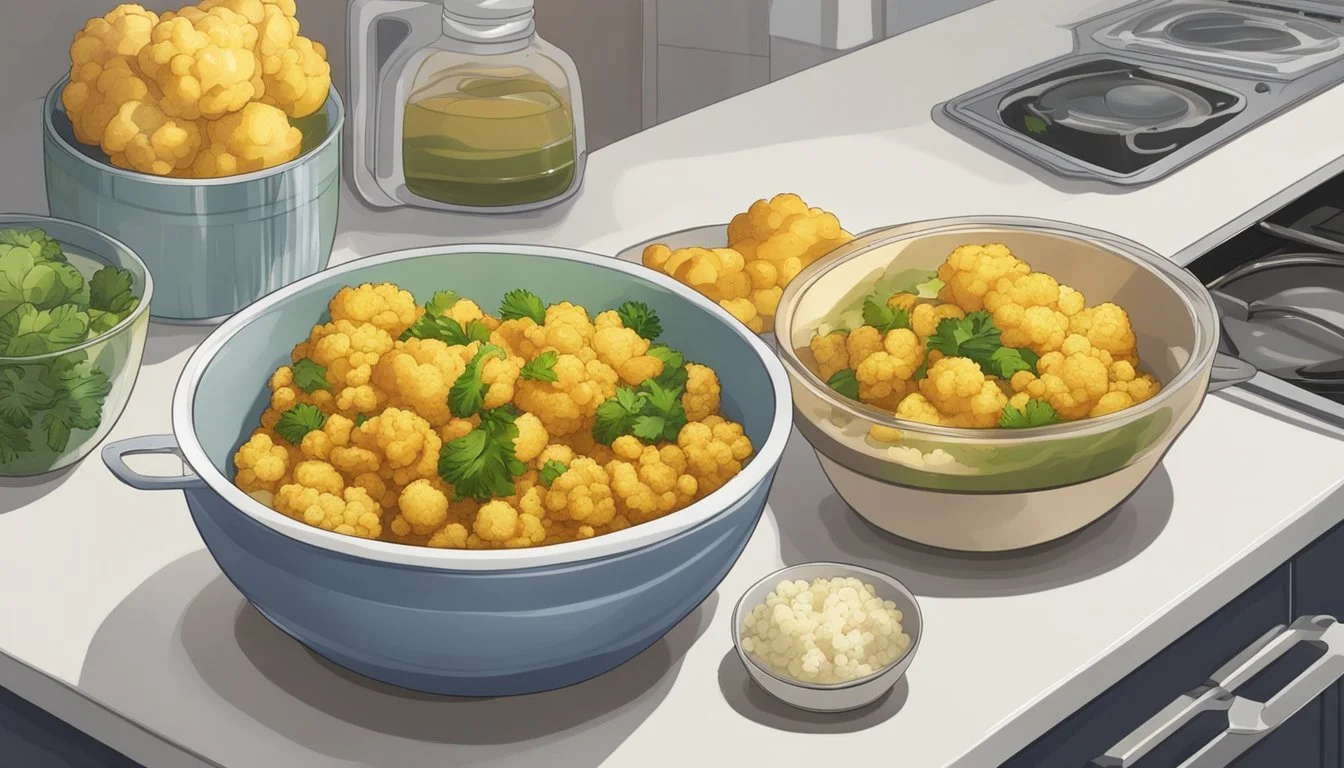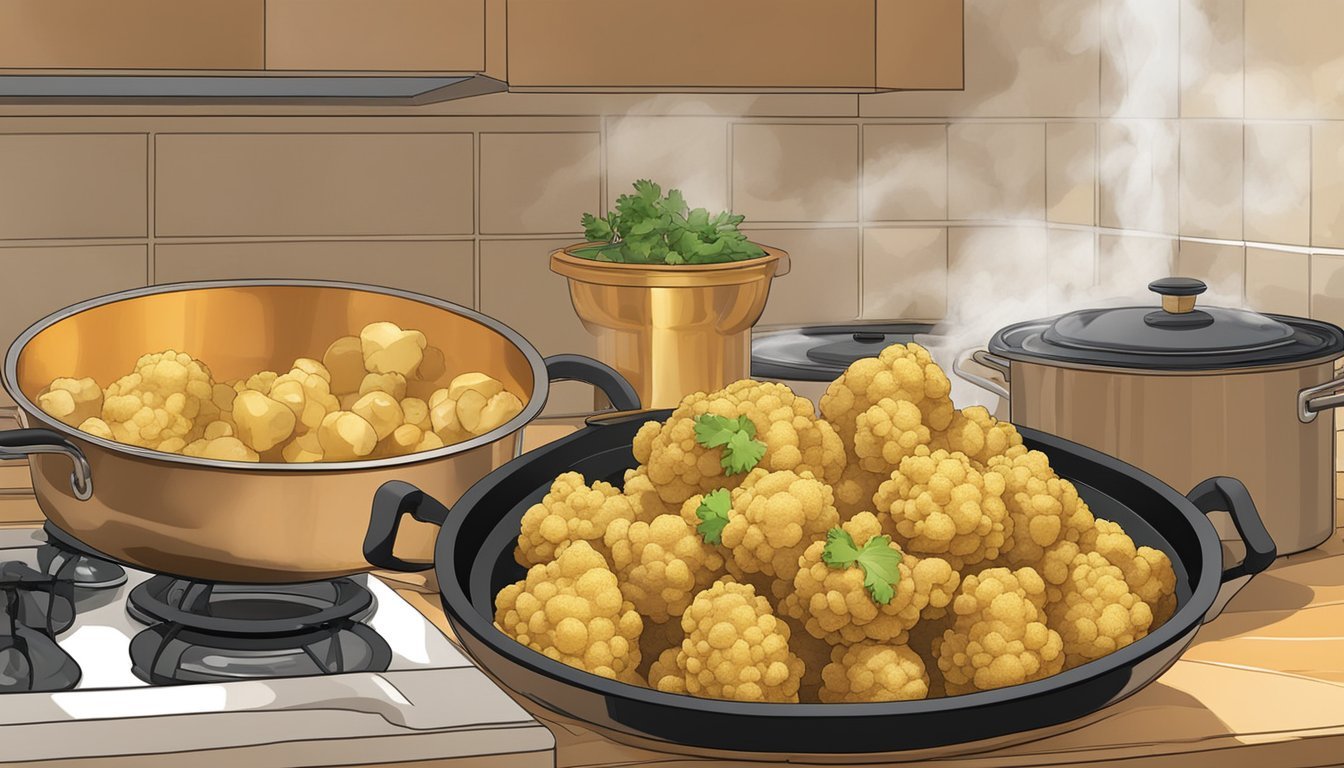Best Way to Reheat Aloo Gobi
Ensuring Crisp Cauliflower and Tender Potatoes
Reheating Aloo Gobi can be as much of an art as cooking it. This classic Indian dish, comprised of potatoes (What wine goes well with potatoes?) (aloo) and cauliflower (gobi), is celebrated for its vibrant flavors and comforting texture. Whether it's been refrigerated after a hearty meal or packed away as a succulent leftover, the challenge is to restore the dish to its original glory without compromising the crispness of the cauliflower or the tenderness of the potatoes.
Traditional methods of reheating often fail to revive the dish adequately, leading to a soggy or dry outcome. However, with the right technique, one can reheat Aloo Gobi effectively, ensuring that the cauliflower remains crisp, and the potatoes maintain their tender bite. It's essential to understand the interplay of textures and flavors to achieve the best results while reheating, as well as to select a method that complements the delicate balance of spices used in the dish.
Aloo Gobi's textures are at their best when the cauliflower has a slight crunch, and the potatoes are soft but not mushy. Therefore, the reheating process should aim to preserve the integrity of each component. Microwave reheating is typically discouraged, as it tends to steam the vegetables, potentially making them limp and ruining the dish's textural contrast. Instead, alternative reheating techniques can yield far superior results, which will be discussed and evaluated.
Essential Ingredients Breakdown
In crafting the perfect Aloo Gobi, the ingredients play pivotal roles, not just for flavor but also for texture. Understanding each component helps in achieving the balance between crispy cauliflower and tender potatoes while preserving the dish's essence when reheating.
Exploring Cauliflower
Cauliflower is the centerpiece of Aloo Gobi. It's renowned for its crisp texture when cooked correctly and its health benefits, including being a good source of vitamin C and fiber. The goal with cauliflower is to maintain its firmness, avoiding sogginess especially when reheating.
Understanding Potatoes
Potatoes add a comforting heartiness to the dish and are equally celebrated for their fiber content and source of energy. Achieving tender potatoes without them becoming mushy is crucial to the integrity of Aloo Gobi. They balance the dish with their soft texture contrasting the cauliflower's crispiness.
Signature Spices in Aloo Gobi
The depth of flavor in Aloo Gobi comes from its signature spices. These typically include:
Cumin: Adds a warm, earthy tone.
Turmeric: Imparts a vibrant color and a peppery-woody profile.
Garam Masala: A blend of ground spices that gives a subtle heat and complexity.
Coriander Powder: Offers a lemony citrus flavor when cooked.
Red Chili Powder: Introduces a spicy kick to the dish.
These spices are essential in any genuine Aloo Gobi recipe, providing it with its distinctive Indian character.
Additional Ingredients
Completing the Aloo Gobi experience, several other ingredients are incorporated to give fullness to the dish's flavor:
Onion and Garlic: Form the aromatic base with their savory notes.
Tomatoes: Contribute a tangy sweetness and help create a thicker sauce when cooking.
Ginger: Introduces a sharp, pungent flavor profile.
Cilantro: Fresh cilantro is often used as a garnish, lending a final touch of fresh, herbaceous notes.
By respecting these essential ingredients and their contributions, the Aloo Gobi retains its traditional essence even upon reheating.
Preparation Before Reheating
Ensuring that Aloo Gobi is stored properly and prepared correctly before reheating is crucial for maintaining the dish's quality. Careful storage prevents sogginess and spoilage, while a good pre-reheat check can enhance the flavors.
Storage Tips for Aloo Gobi
Proper storage of Aloo Gobi begins immediately after the meal. If it's expected to be stored for reheating:
Airtight Container: Transfer the Aloo Gobi to an airtight container. This minimizes exposure to moisture and other flavors in the fridge.
Fridge Temperature: Store in the fridge at a consistent temperature to slow bacterial growth and maintain freshness.
Oil: Lightly coat the Aloo Gobi with a thin layer of oil if dryness is a concern. This helps keep the spices intact and prevents the cauliflower from drying out.
Salt and Spices: Avoid adding extra salt or spices before storage; they can draw out moisture and affect texture upon reheating.
Pre-Reheat Ingredient Check
Before reheating, a quick ingredient check can make a significant difference:
Moisture Level: Check for any excess moisture that may have accumulated. Gently pat dry if needed to ensure crispiness is retained.
Texture: The potatoes should be tender but not too soft. If they are on the softer side, reduce reheating time to prevent them from becoming mushy.
Flavor: Cold can dull the spices’ flavors. Taste and decide if a quick toss in some fresh herbs or spices is needed before reheating to refresh its vibrancy.
By following these guidelines, one can preserve the texture and taste of the Aloo Gobi, making it as satisfying as when it was first prepared.
Reheating Techniques
When it comes to reheating Aloo Gobi, whether it's served as a main course or a side dish, maintaining the texture is paramount. The cauliflower should stay crisp, and the potatoes ought to remain tender. Here are methods to achieve those results without adding excess fat or calories.
Oven Method
The oven is excellent for evenly reheating and maintaining a good texture. Preheat the oven to 350°F (175°C). Place the Aloo Gobi in an oven-safe dish, sprinkle a small amount of water to prevent drying out, and cover with foil. Heat for about 10-15 minutes, then remove the foil and broil for a few minutes to get the cauliflower crisp again.
Stovetop Method
Using a skillet over medium heat adds a slight sear that can enhance the dish's texture. One should lightly oil the pan, add the Aloo Gobi, and cover to heat through. Stir occasionally for even warming for about 5-10 minutes. This method helps keep the potatoes tender and the cauliflower crisp.
Air Fryer Approach
For those seeking the crispiest cauliflower with minimal additional fat, the air fryer is the tool of choice. Heat the Aloo Gobi at 360°F (182°C) for about 4-6 minutes. Watch closely as the air fryer can crisp the edges quickly without making the overall dish too dry.
Avoiding Deep Frying
While deep frying can reintroduce a crispy texture, it's also a method that significantly increases the fat and calorie content. Thus, it is recommended to avoid reheating Aloo Gobi this way to maintain the dish's original integrity and healthfulness.
Serving Suggestions
When it comes to serving Aloo Gobi, the focus should be on complementing its rich flavors while maintaining the integrity of the dish. Choosing the right accompaniments and garnishes can enhance the dining experience by adding varying textures and complementary flavors.
Accompaniments for Aloo Gobi
Aloo Gobi, flavorful and hearty, can be either a main or a side dish. When serving it as the main course, it pairs excellently with a variety of Indian breads:
Naan: Soft and slightly chewy, naan acts as the perfect vehicle to scoop up the Aloo Gobi.
Roti or chapati: These whole wheat alternatives offer a healthier complement with a more rustic taste.
Paratha: A flaky, layered bread that adds a buttery crunch, perfect for absorbing the dish's spices.
Alternatively, Aloo Gobi can serve as a robust side dish alongside protein-rich main courses. For an authentic Indian meal, serve it with:
Basmati rice: Aromatic and fluffy, it balances the robust spices without overpowering the flavors of the dish.
Pulao or Biryani: Spiced and with embedded flavors, these rice dishes make for a luxurious and satisfying meal when paired with Aloo Gobi.
Garnishing and Seasoning
Garnishes are essential to provide a bright finish that complements the deep spice flavors of Aloo Gobi:
Fresh coriander leaves (cilantro): A classic herb that offers a burst of freshness and color.
Lime juice: A splash enhances the dish’s flavors, adding a zing that cuts through the richness.
A small bowl of seasoned yogurt on the side can also help to balance the spice levels, offering a cool, creamy contrast.
Nutritional Information
Aloo Gobi, a combination of potatoes (aloo) and cauliflower (gobi), is a dish with a nutritional profile that supports a well-balanced diet. Typically, a serving size of Aloo Gobi contains a considerable amount of calories that can vary based on the method of preparation and the amount of oil used. On average, a serving might contain approximately 150-250 calories.
The dish is rich in dietary fiber, mainly contributed by cauliflower. Fiber aids in digestion and contributes to a feeling of fullness. Potatoes offer a decent amount of this beneficial carbohydrate as well.
Protein content can be moderate as both potatoes and cauliflower provide this macronutrient, though Aloo Gobi is often consumed alongside a protein-rich curry or dal (lentils) to create a complete meal. To increase the protein in Aloo Gobi, a cook can consider adding paneer (cheese) or chickpeas.
When it comes to micronutrients, Aloo Gobi is a good source of iron, which is vital for blood formation and function. Both cauliflower and potatoes contribute small amounts of iron per serving.
Calcium is another nutrient found in this dish, though in less significant amounts compared to iron. Calcium is essential for bone health and normal muscle function, and it's present in both primary ingredients.
Here's a quick breakdown of the nutritional content:
Nutrient Amount per serving(average) Calories 150-250 kcal Fiber 3-5 g Protein 4-6 g Iron 1-2 mg Calcium 20-50 mg
Aloo Gobi's versatility allows it to be a significant dietary element, adaptable to various dietary needs and preferences.
Pairing with Other Indian Dishes
When reheated, Aloo Gobi can be served alongside a variety of Indian dishes to complement its flavors. Here's a guide to creating a well-rounded meal:
Butter Chicken: The creamy tomato-based gravy of Butter Chicken pairs excellently with the dry texture of Aloo Gobi. The mild spice level of Aloo Gobi allows the rich flavor of Butter Chicken to shine.
Tikka Masala: Typically made with chicken or paneer, Tikka Masala's robust and slightly tangy sauce complements the subtleness of Aloo Gobi, making for a satisfying combination of tastes.
Palak Paneer: The smooth spinach gravy in Palak Paneer provides a nice contrast with the crisp cauliflower. The soft cubes of paneer add a pleasant chewiness that pairs well with tender potatoes.
Raita: A cool and refreshing side dish, raita helps to balance the spices of Aloo Gobi. The yogurt-based condiment often contains cucumber, herbs, and spices, offering a creamy texture and fresh taste.
Here is a suggested menu layout:
Main Dish Side Dish Accompaniment Butter Chicken Aloo Gobi Naan or Rice Tikka Masala Aloo Gobi Mint Chutney Palak Paneer Aloo Gobi Paratha - Aloo Gobi Cucumber Raita
For an authentic dining experience, one may consider arranging these dishes in traditional thali-style, allowing guests to enjoy a bit of everything. All the flavors work harmoniously, providing a feast that is as colorful as it is delicious.
Cultural Significance
Aloo Gobi is more than just a meal; it's a reflection of Indian culture and heritage that has found a place in global cuisine with various adaptations to suit different palates.
Aloo Gobi in Indian Cuisine
Aloo Gobi, a traditional Indian dish, stands out as a staple in Punjabi cuisine. Originating from the fertile plains of Punjab, this flavorful curry is a hearty blend of potatoes (aloo) and cauliflower (gobi). In Hindi, these vegetables are respectfully termed as 'aloo' for potatoes and 'gobi' for cauliflower, hence the name of the dish. This dish is celebrated for not only its savory taste but also for its alignment with vegan and gluten-free dietary choices, making it a common offering in Indian restaurants worldwide.
Global Popularity and Adaptations
As Aloo Gobi traveled beyond the borders of India, its popularity soared, making it a culinary sensation on a global scale. It has been adapted to suit local tastes in various countries, often becoming a bit milder in spice levels or experiencing tweaks in ingredients based on regional preferences. On platforms like Instagram, one can find an array of pictures tagged with #aloogobi, showcasing the dish's versatility and appeal among different cultures. Its ability to resonate with a broad audience while retaining its Indian heritage is a testament to its universal charm.


